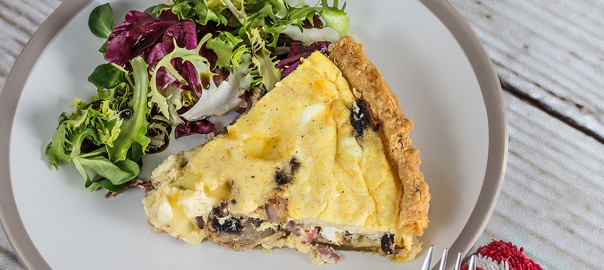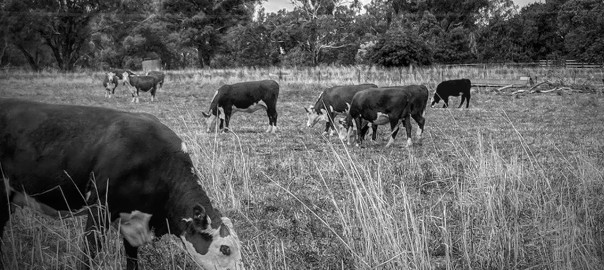Quiche is the ideal brunch food. Yes, better than French toast, cinnamon rolls, and even any combination of fried eggs and cheeseburgers.
It is a delicious, easy to make brunch dish that is a veritable opera of European appropriation. I mean, the word ‘quiche’ carries with it the assumption that it is a culinary dish derived from some famous French culinary experiment.
Quiche has a pretty extensive history, with recorded dishes going back to the 12th century. Although back then, it went under a different name.
A Continental brunch dish
Quiche, you see, is actually believed to have originated in Germany. According to foodreference.com, the savory breakfast food was first concocted in the medieval German kingdom of Lotharingia, which stretched across France, Germany, Luxembourg, Belgium, and the Netherlands. The area where the dish is believed to have derived was called Lothringen in German — it was a German kingdom at the time— but was later annexed by France and renamed Lorraine. The word ‘quiche’ itself comes from the German word for cake, ‘Kuchen.’
According to history, the original ‘quiche Lorraine’ — as it is called — was “an open pie with a filling consisting of an egg and cream custard with smoked bacon.” Over time, cheese was added to the dish that we now call quiche Lorraine.
According to Chef Yankel, it was “traditionally made in a more delicate version, similar to a tart.”
As a brunch food, the quiche, or breakfast pie, gained popularity in France over a long period of time; however, it really grew in esteem in the US during the 80’s and 90’s, as a way to prepare breakfast ahead of time. As an easy-to-make “breakfast casserole,” it became a suburban cuisine staple; sometimes. Quiche even appeared at holidays — think back to whether or not you recall a quiche featured prominently at a past Easter brunch — as well as, strangely, cocktail parties and other gatherings.
Breakfast pies are popular in various forms
But we are most familiar with it as a brunch food in pie form.
And, while both pie-like, a quiche is also not a frittata, just to set the record straight. A frittata is an Italian egg dish — this is also quite popular as a brunch dish — similar to an omelet. It is actually, more of a crustless quiche which combines scrambled eggs, a meat — like ham or bacon — and some vegetables.
On the opposite side of the breakfast food equation is the dutch baby, which is a popover or bread pudding that can be filled with fruits or maple syrup. Bascially, like a frittata is a quiche with out a crust, a dutch baby is like a quiche without the egg filling.
A love it or hate, quiche is the perfect brunch food
Knowledge of the dish’s rich history is not where the story ends for ButcherBox’s Chef Yankel.
“Personally, I have a love/hate relationship with eggs,”Chef Yankel says.
“I was an egg cook for some time at Eastern Standard, working brunch two days a week. During each shift, I would cook at least 150 omelets to order — and we could not serve an omelet if it had even a tiny bit of brown on it. We also had to do 200 to 300 orders of scrambled and fried eggs as well,” he explains. “I’d end each shift covered in eggs.”
And for Yankel and his team, quiche became the balm. “Quiche became one of those pre-made items we could serve to take some of the heat off my station.”
“So while I’m really freaking good at cooking a ton of fried eggs at the same time, and I totally enjoy eating them with a nice cut or ham or some maple sausage, the combination of eggs and brunch is one of those nightmarish experiences anyone who’s put some time into the service industry is familiar with.”
But rest assured, our delicious quiche recipe, with our amazing heritage-breed pork bacon, pays the proper homage to the historical origins of the dish.
Plus, it’s easy to make.
“Quiche is a set-it-and-forget-it kind of dish, really simple to put together, and easy to cook well,” said Chef Yankel. “It has a great shelf life in the fridge and is totally customizable in terms of what you want to flavor it with, it is really one of the best brunch ideas.” So you can put it together really quick in a casserole dish or pie pan and spend more time on the bloody mary mix, hash browns, and coffee cake.
So skip the homemade buttermilk pancakes, eggs benedict, or any other complicated and challenging to make breakfast foods. Give Quiche Lorraine or our own gluten-free recipe below. You won’t be disappointed by the amazing brunch dish, and you’ll likely have
Chef Yankel’s quick “Bacon and Swiss Quiche” recipe:
The crust and the filling can be made the night before a brunch or cooked the night before and reheated. This is one of Chef Yankel’s favorite brunch recipes and serves six and takes 20 minutes to prepare and 60 minutes to cook. This version is healthy and gluten-free, with almond flour making a fabulously nutty crust.
- Quiche Dough:
- 2 c almond flour
- ¼ tsp sea salt
- 2 Tbsp coconut oil
- 1 egg
- Quiche Filling:
- 6 slices ButcherBox bacon diced into ½ pieces
- 3 Eggs1 ½ c heavy cream
- 1 tsp chopped sage
- ¼ tsp fresh ground black pepper
- ¼ tsp nutmeg
- ⅛ tsp salt
- ¼ c grated swiss cheese
Directions:
- Preheat oven to 375°F.
- In a food processor, pulse to combine salt and flour. Add coconut oil and egg and pulse to form a ball.
- Press dough into 9.5” pie dish and bake 8 to 12 min or until lightly browned, set aside.
- Sauté bacon until crispy, drain, pat dry and sprinkle on bottom of quiche crust. Sprinkle Swiss cheese on top of the bacon.
- Whisk together remaining ingredients and pour into quiche crust.
- Bake on middle rack of oven for 35 to 40 min or until golden brown and set.
- Let rest at room temperature for 20 more minutes before slicing and serving. Happy eating!











